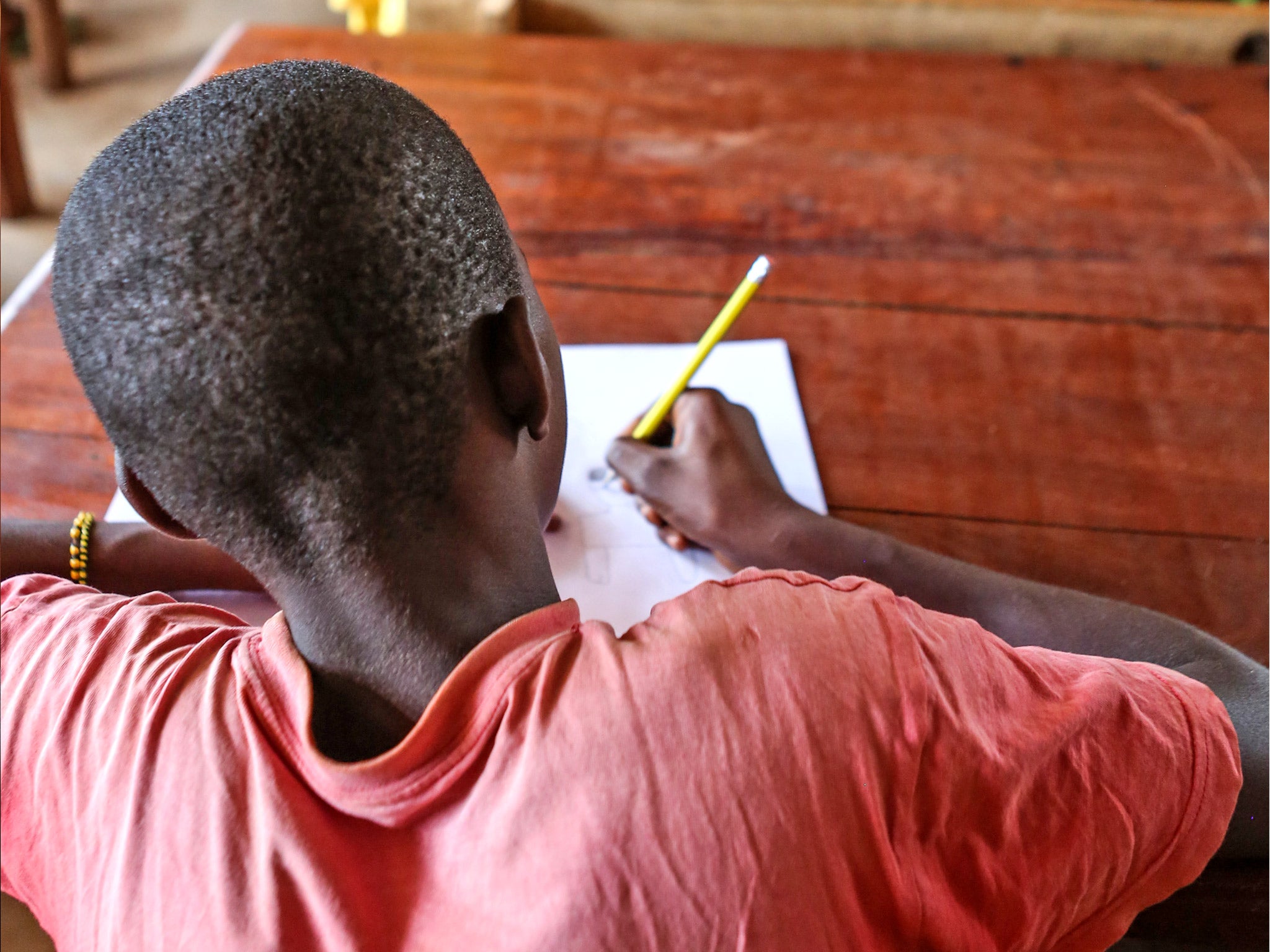Helping killers choose life
Meet the women working tirelessly to help child soldiers start their lives again


Please donate to our appeal for child soldiers here.
This is the story of two child soldiers, and two women who have worked tirelessly on the painful process of trying to help them return to a normal life. One is a success story. The other gives some insight into the depth of inner darkness with which children who fight – and sometimes torture or kill – must wrestle for the rest of their lives. And yet for all that it is a story of hope.
When a child is returned to civilian life they may leave the war behind, but they bring all their woes home. Some exceptional ones such as Vincent make the transition back to normality with apparent ease.
Vincent – which is not his real name – was 13 when he was seized by the most infamous of Africa's armed militias, the Lord's Resistance Army, which marauds across the centre of the continent from South Sudan and Uganda through the Democratic Republic of Congo to, most recently, the Central African Republic (CAR).
He was with the rebels for five years until, injured, they abandoned him and he found his way to Gulu, in northern Uganda, where he met Lotte Vermeij, a Dutch woman who has devoted the past four years to working with child soldiers. “When he came home he had severe post-traumatic stress symptoms,” she recalls. “He had terrible nightmares. Sometimes his eyes would go blank and he could be very violent. At other times he went very quiet, crying all the time.”
He had been forced to take part in many battles. “He had periods of feeling that he was really a member of the militia,” says Ms Vermeij, “but then he would remember his home.” After more than three months in a rehabilitation centre, he was taken back to his village, where he was chosen for a programme in which six returning child soldiers were given strips of land, oxen and the tools needed to start farming.
A similar process of rehabilitation is being undertaken in the CAR by Unicef – which is the focus of The Independent's Christmas Appeal.
(Watch our playlist of videos from the Christmas Appeal here)
“The members of the group started taking care of each other and trusting each other, and understanding that they needed each other,” Ms Vermeij said. “Vincent felt he had a purpose in his life again and his community started accepting him again as one of them.”
But the majority of rescued child soldiers endure far more troubled times. Dr Elisabeth Schauer-Kaiser is international director of Vivo, an alliance of medical professionals which has done research and rehabilitation work with child soldiers. In her experience, the traumas suffered by the majority can leave them damaged for life.
One 16-year-old she met in 2009 had spent three years in a Congo militia called the Mai-Mai. Matthew, as we shall call him, no longer remembered if he was forced to join or did so freely. With the rebels, he was constantly under the influence of drugs.
His commander, in whose magic powers all the children believed, infused them with a sense of righteous purpose: saving their region, the Kivus, from invaders. But those who disobeyed him met hideous fates: Matthew recalled three of his comrades being nailed to trees and tortured with burning plastic. During the night their bodies were devoured by animals.
Eventually, the group was defeated and the children taken to rehabilitation centres. But for Matthew that experience was in some ways worse than being in the militia. He was tormented by terrible nightmares about babies and their crushed skulls. He told Dr Schauer-Kaiser: “My heart is beating strong these days and something in my head is so wrong… Sometimes at night I walk out of the building, especially when I get the dreams, and stare at the sky. When the moon shines bright I can see my life in the bush and how we would always sleep under the stars. And then I get restless. I just wish that my head would get normal again.”
From her organisation's thousands of interviews, Dr Schauer-Kaiser identifies two distinct types of psycho-pathology found in former child soldiers. The first are like Matthew, tormented by nightmares, flashbacks and the all-consuming effort to keep the bad memories at bay, and suffering severe depression. “The suicide rate is very high,” she says, “and that's the biggest problem: they wish they were dead. You are made to commit acts of violence that leave you feeling extremely guilty later. You may also feel guilty simply because you have survived.”
Another group of boys exhibit even more disturbing symptoms. They have learnt to enjoy killing, and get excited and stimulated by carrying out cruel acts; who perpetrate sexual violence, mutilations, torture and massacres.
For this second type, what in the beginning might be a way of adapting to survive among the rebels turns into a lifestyle. Yet in terms of psycho-pathology, this is as disabling for civilian life as an anxiety disorder. Untreated, it can last a lifetime: Dr Schauer-Kaiser recalled meeting victims of the violence in Ceausescu's Romania still suffering in their 80s.
Yet despite that, there is hope. Her group has developed simple therapy programmes which, according to research carried out on 1,113 former child soldiers from Uganda and published by the American Medical Association, have remarkable rates of success.
The technique is called narrative exposure therapy, and involves therapists – who may be local village people and whose only necessary qualification is literacy – sitting down with the former child soldiers and getting them to tell the story of their lives.
“The counsellor puts a rope on the ground,” Dr Schauer-Kaiser says, “and there is a pile of flowers, a pile of stones and some sticks, and as they recall their lives they put a flower for a good memory, a stone for a bad one and a stick for violent acts they have perpetrated.
”Some of the children put stones at the very beginning, because of their bad experiences from babyhood; some put a single flower for the time in the bush when they did not have to kill for one month. It's very good if there are flowers early in life, related to the earliest memories: smells of cooking, the smell of mother, things like that.“
For some rescued child soldiers, six sessions such as this can be enough to transform their prospects. For those who have learnt to enjoy killing, there is a more elaborate programme involving group sessions in which the participants swap roles, undergo psycho diagnostic screening and fill in questionnaires about what they did in combat. ”You go slowly into the past, in absolute detail,“ she says, ”and the story becomes more and more complex.“
Dr Schauer-Kaiser warns that merely liberating child soldiers and reuniting them with their families is not enough. The trauma of war ”indelibly changes an individual on several levels“, she says, leaving them with shattered self-esteem and a belief that the world is basically frightening and evil.
And if trauma this deep-rooted is not tackled clinically, there is a risk that the damaged individuals may wreak havoc later on. What is fortunate for the rescued children is that some understanding is now emerging of how they can be helped to cope.
Unicef's work with child soldiers is funded entirely by donations, please click here to support it. Text CHILD to 70030 to donate five pounds. Click here to bid in our charity auction

Join our commenting forum
Join thought-provoking conversations, follow other Independent readers and see their replies